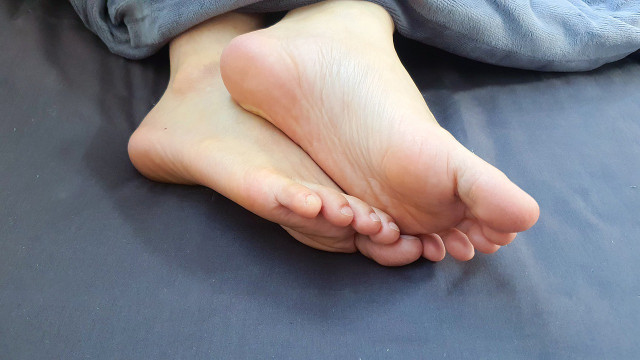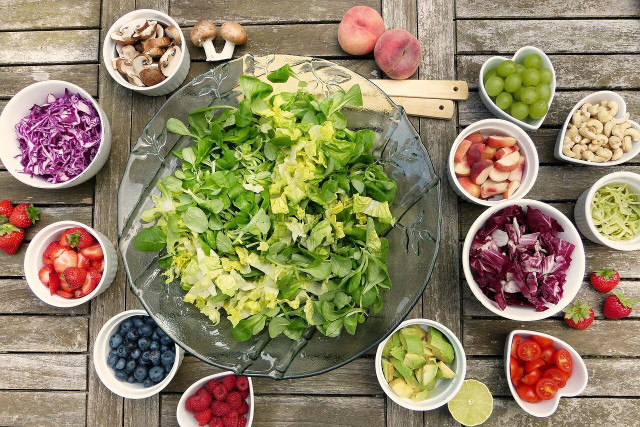Growing pains symptoms are not serious but can be distressing for children and parents. Find out more about them and a few home remedies you can try to relieve them.
The phenomenon of growing pains symptoms does not actually appear to be directly correlated to growing. In fact, what causes growing pains symptoms remains unknown, despite being first described and researched in 1823 by a French doctor called Marcel Duchamp. Since then, a myriad of studies have failed to discover the etiology of this unusual condition.
Growing pains symptoms affect around 50 percent of children aged between three and 14, and are the most common cause of musculoskeletal pain in this age group. Growing pains symptoms generally come and go intermittently during these childhood years and are not a cause for concern. They are, however, unpleasant for children and parents. So, let’s look at the main growing pains symptoms and how to manage them.
Common Growing Pains Symptoms

The primary growing pains symptom is a pain in the legs during the night or evening periods that appears to affect boys and girls equally. The pain is usually described as an aching or throbbing in both legs, affecting the muscles as opposed to the joints, and typically lasting for minutes to hours. Some children may also experience muscle cramps, abdominal pain or headaches during episodes of growing pains. Growing pains symptoms usually resolve spontaneously and do not cause any lasting damage to the lower limbs.
According to the American College of Rheumatology, possible causes of growing pains symptoms include:
- Hyperactivity levels
- Mechanical pain caused by hypermobility in the joints or flat feet
- Vitamin D deficiency
- Psychosocial stress
Home Remedies For Growing Pains Symptoms



Gentle muscle stretching, increasing daily activity, administering over-the-counter painkillers, and wearing the correct footwear are ways to treat the symptoms of growing pains. It’s also important to have your child assessed for flat feet or any other physical disorder that may be confused with growing pain symptoms. If your child has been assessed and diagnosed with growing pains symptoms, there are several home remedies you can also try.
1. Gentle Massage
Gentle massage of the affected area can ease growing pain symptoms. You can even make your own pain-relieving paste to massage into the legs by mixing a teaspoon of cayenne pepper with two teaspoons of olive oil. The red spice contains an active component called capsaicin — which puts heat into chili peppers and acts as a natural painkiller. Add the compound to your child’s diet by growing hot peppers and cooking with them.
2. Heat
Heat naturally encourages circulation to an area because it causes blood vessels to widen in a process called vasodilation. Heat is also comforting and soothing for growing pains symptoms. There is no need to buy expensive, heavily packaged, energy-consuming gadgets or packs. A hot-water bottle or homemade heating pad will suffice, or give your child a warm bath before bed. Make sure you do not apply heat directly to the skin to avoid burns. Cover a hot water bottle with a towel or blanket.
3. Essential Oils
Some essential oils appear to reduce our sensation of pain and may benefit growing pains symptoms. How they work remains a mystery, but research has shown that aromatherapy reduces pain. Clove oil benefits are abundant and this oil has been extracted for its pain-relieving properties for centuries. Many essential oils also contain neuro-depressive qualities for blocking pain — like peppermint, eucalyptus, lavender, and myrrh.
These oils can be diluted in carrier oils such as almond oil or coconut oil, and applied directly or massaged into the legs. Alternatively, essential oils can be diffused in burners and inhaled. While many electronic diffusers are available, burning only a candle in a traditional burner is an eco-friendly way of freshening the air in your home, saving energy, and relieving your child’s growing pain symptoms.
Adequate Nutrition For Growing Pain Symptoms



Some research suggests that nutrient deficiencies may contribute to growing pains symptoms — particularly vitamin D. Vitamin D is produced naturally in response to sunlight and obtained in the diet. It is therefore important that your child plays outside and enjoys the sunshine — even in colder weather.
Vitamin D is commonly obtained through sunshine, fortified milk, and fortified margarine. This is because vitamin D is not abundant in foods and is only significantly found in some fish, eggs, and mushrooms treated with UV light. The pescatarian diet may be worth investigating to boost vitamin D levels with fish.
If you are vegan or vegetarian, check out the vegan food pyramid to make sure you and your family are eating a balanced diet. Get healthy with the raw vegan diet by checking out its pros and cons if veganism is something you are interested in. The planetary health diet also strives for optimal nutrition and health (for us and the planet) and might also be worth investigating to help treat growing pain symptoms and the climate crisis.
Read more:
- 10 Natural Home Remedies for Period Cramps and Pain Relief
- Herbal Remedies: 5 Yarrow Benefits and Uses
- Headache Home Remedies That Really Work
Important Information regarding Health-related Topics.
** Links to retailers marked with ** or underlined orange are partially partner links: If you buy here, you actively support Utopia.org, because we will receive a small part of the sales proceeds. More info.Do you like this post?






